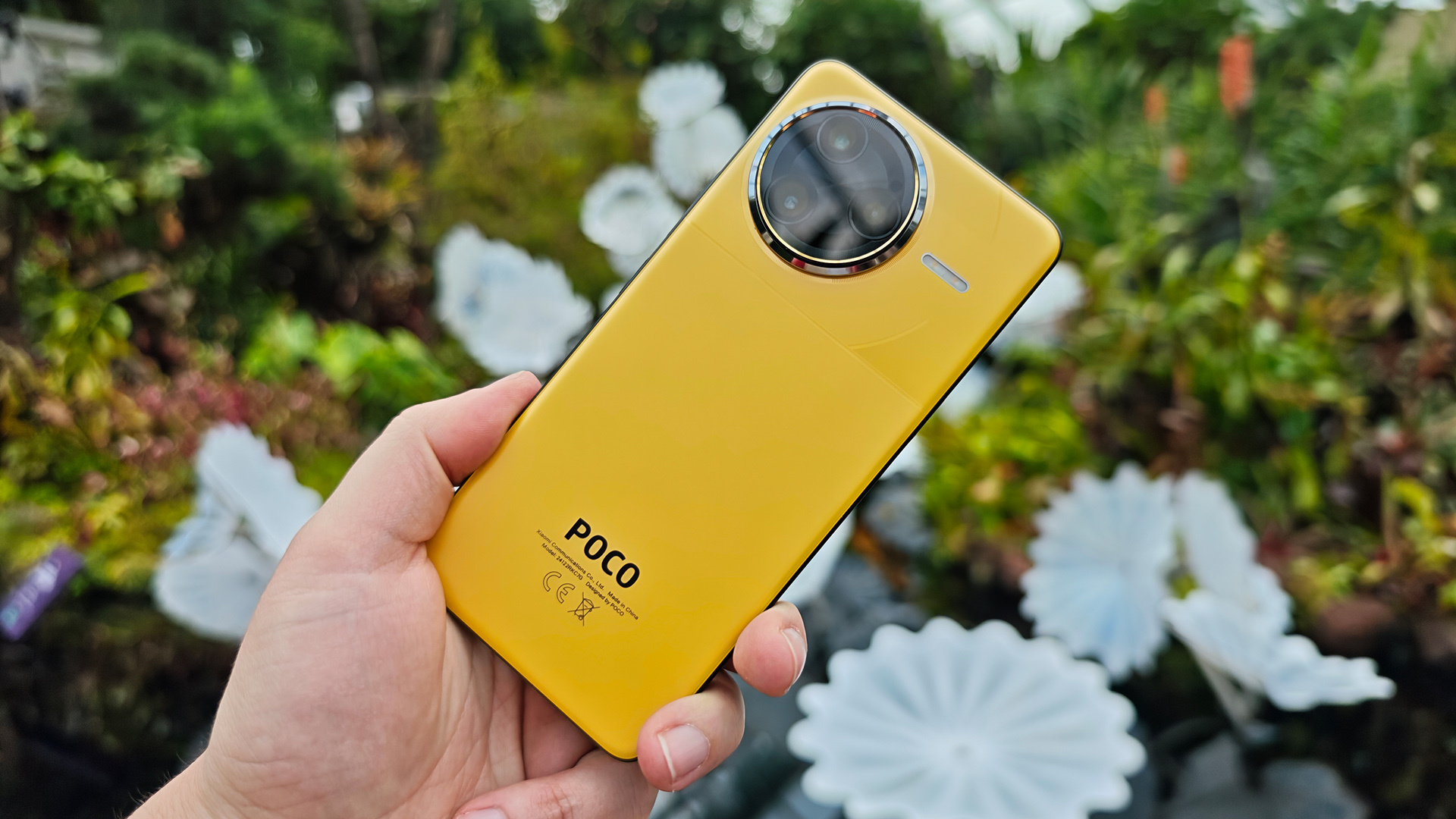
小米 Poco F7 Ultra 评测--超快智能手机旨在挑战竞争对手
不是旗舰杀手
Poco F7 Ultra 是小米公司 2025 年的旗舰产品,它拥有强大的整体配置、多功能摄像头和一些人工智能功能。虽然它可能配不上 "旗舰杀手 "的称号,但它仍然是一款令人印象深刻的智能手机。Daniel Schmidt, 👁 Daniel Schmidt (translated by DeepL / Ninh Duy) Published 🇺🇸 🇩🇪 ...
评语--面向低价猎手的旗舰产品
在测试中,小米 Poco F7 Ultra 的高性能、长续航时间和良好的摄像头设置给人留下了深刻印象。它通过了 IP68 等级认证,这意味着它可以防尘防水。此外,它还支持无线和有线快速充电。
略显过时的 USB 2.0 端口速度较慢。Wi-Fi 模块缺少 6 GHz 频段,Poco 智能手机不支持 eSIM 卡。Android ,它提供的主要更新也比三星的中端智能手机少。
Pros
Cons
Table of Contents
- 评语--面向低价猎手的旗舰产品
- 规格
- 外壳 - IP68 认证机身,带屏蔽玻璃
- 设备 - 不再有 1TB 版本
- 软件 - Poco F7 系列 6 年一更新
- 通信和全球导航卫星系统 - Poco F7 Ultra 的 Wi-Fi 7,无 6 GHz 频段
- 电话功能和语音质量 - 无 eSIM 卡
- 相机 - Poco F7 Ultra 的三部佳作
- 配件和保修 - 不含电源装置的 Poco 手机
- 输入和操作 - 板载超声波指纹传感器
- 显示屏 - 采用 WQHD+ 和 120 Hz 的明亮 AMOLED 显示屏
- 性能 - Poco 依靠骁龙 8 精英版
- 排放 - Poco F7 Ultra 的双扬声器
- 电池寿命 - Poco F7 Ultra 电池容量为 5,300 毫安时
- Notebookcheck 总体评分
- Possible alternatives
在过去的一年里 Poco F6 Pro是顶级机型;现在,小米子公司推出了 Poco F7 Ultra,这是首款带有 "Ultra "前缀的机型,在功能上比它更胜一筹。不过,还有一款 Poco F7 Pro 可供选择。
Ultra 基于高通公司最新的顶级 SoC,还改进了摄像头。您可以在我们的测试中了解 Poco F7 Ultra 的其他功能。
规格
» Notebookcheck多媒体笔记本电脑Top 10排名
» Notebookcheck游戏笔记本电脑Top 10排名
» Notebookcheck低价办公/商务笔记本电脑Top 10排名
» Notebookcheck高端办公/商务笔记本电脑Top 10排名
» Notebookcheck工作站笔记本电脑Top 10排名
» Notebookcheck亚笔记本电脑Top 10排名
» Notebookcheck超级本产品Top 10排名
» Notebookcheck变形本产品Top 10排名
» Notebookcheck平板电脑Top 10排名
» Notebookcheck智能手机Top 10排名
» Notebookcheck评测过最出色的笔记本电脑屏幕
» Notebookcheck售价500欧元以下笔记本电脑Top 10排名
» Notebookcheck售价300欧元以下笔记本电脑Top 10排名
外壳 - IP68 认证机身,带屏蔽玻璃
Poco F7 Ultra 有黑色和黄色两种颜色。它的重量为 212 克,并不是最轻的智能手机之一,但 8.39 毫米的机身(我们测量的是 8.75 毫米)并不算太厚,尤其是背面的圆角设计非常适合手持。相机模块的高度可达 3.6 毫米。
正面由 Poco Shield 玻璃保护,据说比 Pro 机型的大猩猩 7i 玻璃更耐磨。Poco 智能手机在扭动时会发出轻微的吱吱声,但完全抗压。缝隙窄而均匀。
卡槽略微凹入铝制边框,可容纳两个 nanoSIM 卡。我们测试设备的边框和背面采用磨砂处理,不易沾染指纹。Poco F7 Ultra 通过了 IP68 防尘防水认证。
设备 - 不再有 1TB 版本
Poco F7 Ultra 有 12/256 GB 或 16/512 GB 两种规格,售价分别为 800 欧元或 750 欧元,具体取决于所选的存储版本。
集成的 USB 端口采用 2.0 标准,传输速率一般。由于输出电压有限,我们还不得不改用 三星 PSSD T7进行拷贝测试。
此外,NFC 和用于控制电视、空调等设备的红外热像仪也再次登场。
软件 - Poco F7 系列 6 年一更新
可持续性
Poco F7 Ultra 包装在一个纸箱中,用透明薄膜收缩包装。里面只有纸板和两张可堆肥塑料。小米在包装盒上做了手脚,因为它发出 "沙沙 "的响声。
包装盒上没有为最终用户提供自我维修或备件的说明。小米也没有提供智能手机的可持续发展报告。
通信和全球导航卫星系统 - Poco F7 Ultra 的 Wi-Fi 7,无 6 GHz 频段
小米 Poco F7 Ultra 支持所有现代通信标准,包括频段覆盖良好的 5G Sub6。在大都市地区,智能手机的接收效果始终很好。
Poco 支持 Wi-Fi 7,但不支持 6 GHz 频段。在 5 GHz 频段,与我们的华硕 ROG Rapture GT-AXE11000 参考路由器配合使用时,它能达到不错的传输速率;传输速率主要是稳定的。
| Networking | |
| Xiaomi Poco F7 Ultra | |
| iperf3 transmit AXE11000 | |
| iperf3 receive AXE11000 | |
| Samsung Galaxy S25+ | |
| iperf3 transmit AXE11000 | |
| iperf3 receive AXE11000 | |
| iperf3 transmit AXE11000 6GHz | |
| iperf3 receive AXE11000 6GHz | |
| Google Pixel 9 | |
| iperf3 transmit AXE11000 | |
| iperf3 receive AXE11000 | |
| iperf3 transmit AXE11000 6GHz | |
| iperf3 receive AXE11000 6GHz | |
| Motorola Edge 50 Ultra | |
| iperf3 transmit AXE11000 6GHz | |
| iperf3 receive AXE11000 6GHz | |
| Xiaomi Poco F6 Pro | |
| iperf3 transmit AXE11000 | |
| iperf3 receive AXE11000 | |
| Average 802.11 a/b/g/n/ac/ax/be | |
| iperf3 transmit AXE11000 | |
| iperf3 receive AXE11000 | |
| iperf3 transmit AXE11000 6GHz | |
| iperf3 receive AXE11000 6GHz | |
| Average of class Smartphone | |
| iperf3 transmit AXE11000 | |
| iperf3 receive AXE11000 | |
| iperf3 transmit AXE11000 6GHz | |
| iperf3 receive AXE11000 6GHz | |
得益于双频全球导航卫星系统,Poco F7 Ultra 可以让您快速、准确地确定自己的位置。
在短暂的步行测试中,我们将它与健身智能手表进行了比较 Garmin Venu 2.智能手机能很好地跟踪路线,但我们希望它能更频繁地检索自己的位置。
电话功能和语音质量 - 无 eSIM 卡
Poco F7 Ultra 支持 VoLTE 和 Wi-Fi 通话等常用功能,但不支持 eSIM。
将手机贴在耳边时,语音质量不错,但环境噪声抑制效果可能会更好。尤其是在繁忙的街道上,总能听到干扰噪音。扬声器模式效果不错,但麦克风声音很小,所以用户不要离智能手机太远。
相机 - Poco F7 Ultra 的三部佳作
在前置摄像头方面,Poco F7 Ultra 配备了功能强大的 3200 万像素摄像头。不过,该镜头既不能自动对焦,也不能像素分档,最多只能录制全高清(60 FPS)视频。在光线条件良好的情况下,效果还算不错,但在光线不足的情况下,很快就会出现噪点。
背面的三摄像头是一大亮点。F7 Pro 也配备了主传感器,但 Ultra 还配备了高分辨率的超广角和长焦镜头。Poco 智能手机在拍摄日间照片方面表现出色,但其色调往往过于饱和,尤其是蓝色和绿色色调。一个明显的缺点是它在弱光拍摄中的表现,由于 Poco 经常试图过度增亮场景,所有镜头的质量都大幅下降。
使用三摄像头可以录制最高 60 FPS 的超高清视频;如果只使用主传感器,则可以录制最高 8K(24 FPS)的视频。
使用 Poco F7 Ultra 录音
Image Comparison
Choose a scene and navigate within the first image. One click changes the position on touchscreens. One click on the zoomed-in image opens the original in a new window. The first image shows the scaled photograph of the test device.
Main cameraMain cameraUltra wide-angle5x ZoomLow-Light

配件和保修 - 不含电源装置的 Poco 手机
Poco F7 Ultra 随附一条 USB 数据线(Type-A 转 Type-C)、一个 SIM 卡工具和一个保护盖。
保修期仅为 12 个月,但不影响 经销商保修.在德国,还可以预订小米关怀保险套餐,根据范围不同,两年的费用分别为 59 欧元或 79 欧元。
输入和操作 - 板载超声波指纹传感器
显示屏 - 采用 WQHD+ 和 120 Hz 的明亮 AMOLED 显示屏
Poco F7 Ultra 配备了一块 6.7 英寸 AMOLED 显示屏,分辨率非常高,支持高达 120 Hz 的刷新率。不过,这并不是全 LTPO 面板,这意味着智能手机只能将刷新率降低到 60 Hz。
亮度非常高,在纯白色显示屏下,屏幕中央亮度达到 1,846 cd/m²;在缩小白色区域(APL18)时,亮度为 3,192 cd/m²,我们在播放 HDR 内容时测得的亮度为 3,177 cd/m²。如果只手动调节亮度,最高可达到 600 cd/m²。
在 Poco F7 Ultra 上,我们还发现了 OLED 的典型闪烁现象。120 Hz 的合理低基频被平坦的振幅和高达 3,840 Hz 的高频 PWM 调光所抵消(我们测得的频率为 3,125 Hz),因此只有在特殊情况下才会出现投诉。
| |||||||||||||||||||||||||
Brightness Distribution: 93 %
Center on Battery: 1846 cd/m²
Contrast: ∞:1 (Black: 0 cd/m²)
ΔE Color 1.2 | 0.5-29.43 Ø4.87
ΔE Greyscale 2.3 | 0.5-98 Ø5.1
99.3% sRGB (Calman 2D)
Gamma: 2.25
| Xiaomi Poco F7 Ultra Flow AMOLED, 3200x1440, 6.7" | Samsung Galaxy S25+ Dynamic AMOLED 2X, 3120x1440, 6.7" | Google Pixel 9 OLED, 2424x1080, 6.3" | Motorola Edge 50 Ultra P-OLED, 2712x1220, 6.7" | |
|---|---|---|---|---|
| Screen | -34% | 20% | 18% | |
| Brightness middle | 1846 | 1371 -26% | 2063 12% | 1326 -28% |
| Brightness | 1850 | 1370 -26% | 1914 3% | 1312 -29% |
| Brightness Distribution | 93 | 96 3% | 84 -10% | 90 -3% |
| Black Level * | ||||
| Colorchecker dE 2000 * | 1.2 | 2.7 -125% | 0.7 42% | 0.51 57% |
| Colorchecker dE 2000 max. * | 2.9 | 4.2 -45% | 2.2 24% | 1.85 36% |
| Greyscale dE 2000 * | 2.3 | 2 13% | 1.2 48% | 0.6 74% |
| Gamma | 2.25 98% | 2.03 108% | 2.23 99% | 2.191 100% |
| CCT | 6707 97% | 6450 101% | 6524 100% | 1355 480% |
* ... smaller is better
| Display / APL18 Peak Brightness | |
| Xiaomi Poco F7 Ultra | |
| Google Pixel 9 | |
| Samsung Galaxy S25+ | |
Screen Flickering / PWM (Pulse-Width Modulation)
| Screen flickering / PWM detected | 120 Hz Amplitude: 14.96 % Secondary Frequency: 3125 Hz | ||
The display backlight flickers at 120 Hz (worst case, e.g., utilizing PWM) . The frequency of 120 Hz is very low, so the flickering may cause eyestrain and headaches after extended use. In comparison: 53 % of all tested devices do not use PWM to dim the display. If PWM was detected, an average of 8519 (minimum: 5 - maximum: 343500) Hz was measured. | |||
固定缩放级别和不同亮度设置下的测量系列(最低亮度下的振幅曲线看起来很平,但这是缩放造成的。信息框显示的是最小亮度下的振幅放大图)
Display Response Times
| ↔ Response Time Black to White | ||
|---|---|---|
| 1.12 ms ... rise ↗ and fall ↘ combined | ↗ 0.531 ms rise | |
| ↘ 0.59 ms fall | ||
| The screen shows very fast response rates in our tests and should be very well suited for fast-paced gaming. In comparison, all tested devices range from 0.1 (minimum) to 240 (maximum) ms. » 3 % of all devices are better. This means that the measured response time is better than the average of all tested devices (20.8 ms). | ||
| ↔ Response Time 50% Grey to 80% Grey | ||
| 1 ms ... rise ↗ and fall ↘ combined | ↗ 0.5005 ms rise | |
| ↘ 0.4995 ms fall | ||
| The screen shows very fast response rates in our tests and should be very well suited for fast-paced gaming. In comparison, all tested devices range from 0.165 (minimum) to 636 (maximum) ms. » 2 % of all devices are better. This means that the measured response time is better than the average of all tested devices (32.5 ms). | ||
性能 - Poco 依靠骁龙 8 精英版
Poco F7 Ultra 搭载了速度极快的 骁龙 8 精英SoC 处理器,可使用 12 或 16 GB 内存,具体取决于所选的内存版本。在测试时,其性能是目前最好的,基准测试中也没有出现意外。
图形计算由 Adreno 830 处理,该芯片可为所有场景提供出色的性能。Poco 还集成了VisionBoost D7芯片组,可为游戏提供额外的性能,从而提高游戏的显示质量,例如在《源氏冲击》中可选择 120 Hz。
GFXBench (DX / GLBenchmark) 2.7: T-Rex Onscreen | 1920x1080 T-Rex Offscreen
GFXBench 3.0: on screen Manhattan Onscreen OGL | 1920x1080 1080p Manhattan Offscreen
GFXBench 3.1: on screen Manhattan ES 3.1 Onscreen | 1920x1080 Manhattan ES 3.1 Offscreen
GFXBench: on screen Car Chase Onscreen | 1920x1080 Car Chase Offscreen | on screen Aztec Ruins High Tier Onscreen | 2560x1440 Aztec Ruins High Tier Offscreen | on screen Aztec Ruins Normal Tier Onscreen | 1920x1080 Aztec Ruins Normal Tier Offscreen | 3840x2160 4K Aztec Ruins High Tier Offscreen
| 3DMark / Wild Life Extreme Unlimited | |
| Samsung Galaxy S25+ | |
| Xiaomi Poco F7 Ultra | |
| Motorola Edge 50 Ultra | |
| Xiaomi Poco F6 Pro | |
| Google Pixel 9 | |
| Jetstream 2 - 2.0 Total Score | |
| Samsung Galaxy S25+ (Chrome 133.0.6943.137) | |
| Xiaomi Poco F7 Ultra (Chrome 134) | |
| Motorola Edge 50 Ultra (Chrome 126) | |
| Average Qualcomm Snapdragon 8 Elite (89.7 - 289, n=12) | |
| Xiaomi Poco F6 Pro (chrome 127) | |
| Average of class Smartphone (13.8 - 387, n=171, last 2 years) | |
| Google Pixel 9 (Chrome 129) | |
* ... smaller is better
| Xiaomi Poco F7 Ultra | Samsung Galaxy S25+ | Google Pixel 9 | Motorola Edge 50 Ultra | Xiaomi Poco F6 Pro | Average 512 GB UFS 4.1 Flash | Average of class Smartphone | |
|---|---|---|---|---|---|---|---|
| AndroBench 3-5 | -6% | -54% | 5% | 3% | 4% | -33% | |
| Sequential Read 256KB | 4002.68 | 4057.35 1% | 1584.56 -60% | 3926.6 -2% | 3070.33 -23% | 4014 ? 0% | 2030 ? -49% |
| Sequential Write 256KB | 3464.43 | 3311.02 -4% | 256.48 -93% | 3558.6 3% | 2987.47 -14% | 3565 ? 3% | 1646 ? -52% |
| Random Read 4KB | 311.24 | 294.51 -5% | 226.41 -27% | 349.1 12% | 381.58 23% | 327 ? 5% | 282 ? -9% |
| Random Write 4KB | 411.78 | 351.16 -15% | 266.19 -35% | 430.6 5% | 520.87 26% | 438 ? 6% | 325 ? -21% |
排放 - Poco F7 Ultra 的双扬声器
温度
在负载情况下,Poco F7 Ultra 的表面温度会明显升高,但仍保持在无害范围内。
与前代产品相比,SoC 的散热有所改善,但在压力测试中仍会出现明显的节流现象。
(-) The maximum temperature on the upper side is 47.7 °C / 118 F, compared to the average of 35.1 °C / 95 F, ranging from 21.9 to 63.7 °C for the class Smartphone.
(-) The bottom heats up to a maximum of 48.4 °C / 119 F, compared to the average of 33.9 °C / 93 F
(+) In idle usage, the average temperature for the upper side is 28.7 °C / 84 F, compared to the device average of 32.8 °C / 91 F.
3DMark Steel Nomad Stress Test
| 3DMark | |
| Wild Life Stress Test Stability | |
| Google Pixel 9 | |
| Motorola Edge 50 Ultra | |
| Xiaomi Poco F7 Ultra | |
| Xiaomi Poco F6 Pro | |
| Samsung Galaxy S25+ | |
| Wild Life Extreme Stress Test | |
| Motorola Edge 50 Ultra | |
| Google Pixel 9 | |
| Xiaomi Poco F7 Ultra | |
| Xiaomi Poco F6 Pro | |
| Samsung Galaxy S25+ | |
| Solar Bay Stress Test Stability | |
| Xiaomi Poco F7 Ultra | |
| Xiaomi Poco F6 Pro | |
| Motorola Edge 50 Ultra | |
| Samsung Galaxy S25+ | |
| Steel Nomad Light Stress Test Stability | |
| Google Pixel 9 | |
| Motorola Edge 50 Ultra | |
| Xiaomi Poco F7 Ultra | |
| Samsung Galaxy S25+ | |
发言人
只要音量不太大,这两个扬声器就能发出浑厚的声音。如果音量过高,声音就会变得高音偏重,在安静的段落中还会有轻微的嘶嘶声。
蓝牙有多种无线编解码器可供选择。还支持 Auracast 和 ASHA。
Xiaomi Poco F7 Ultra audio analysis
(+) | speakers can play relatively loud (89.9 dB)
Bass 100 - 315 Hz
(-) | nearly no bass - on average 23.8% lower than median
(±) | linearity of bass is average (9.7% delta to prev. frequency)
Mids 400 - 2000 Hz
(±) | reduced mids - on average 5.3% lower than median
(+) | mids are linear (4.8% delta to prev. frequency)
Highs 2 - 16 kHz
(±) | higher highs - on average 5.5% higher than median
(+) | highs are linear (3.1% delta to prev. frequency)
Overall 100 - 16.000 Hz
(±) | linearity of overall sound is average (17.4% difference to median)
Compared to same class
» 11% of all tested devices in this class were better, 7% similar, 82% worse
» The best had a delta of 12%, average was 36%, worst was 134%
Compared to all devices tested
» 30% of all tested devices were better, 8% similar, 61% worse
» The best had a delta of 4%, average was 24%, worst was 134%
Samsung Galaxy S25+ audio analysis
(+) | speakers can play relatively loud (90.9 dB)
Bass 100 - 315 Hz
(-) | nearly no bass - on average 18.3% lower than median
(+) | bass is linear (6.5% delta to prev. frequency)
Mids 400 - 2000 Hz
(±) | higher mids - on average 6.3% higher than median
(+) | mids are linear (5.2% delta to prev. frequency)
Highs 2 - 16 kHz
(±) | higher highs - on average 6.7% higher than median
(+) | highs are linear (4.6% delta to prev. frequency)
Overall 100 - 16.000 Hz
(±) | linearity of overall sound is average (16.8% difference to median)
Compared to same class
» 7% of all tested devices in this class were better, 6% similar, 87% worse
» The best had a delta of 12%, average was 36%, worst was 134%
Compared to all devices tested
» 27% of all tested devices were better, 7% similar, 66% worse
» The best had a delta of 4%, average was 24%, worst was 134%
电池寿命 - Poco F7 Ultra 电池容量为 5,300 毫安时
耗电量
Poco F7 Ultra 的功耗相当均衡。
通过小米的 HyperCharge 技术,这款智能手机的无线充电功率可达 50 瓦,有线充电功率可达 120 瓦。使用合适的电源适配器,Poco 只需 31 分钟即可充满电(12 分钟充 50%,21 分钟充 80%)。
| Off / Standby | |
| Idle | |
| Load |
|
Key:
min: | |
| Xiaomi Poco F7 Ultra 5300 mAh | Samsung Galaxy S25+ 4900 mAh | Google Pixel 9 4700 mAh | Motorola Edge 50 Ultra 4500 mAh | Xiaomi Poco F6 Pro 5000 mAh | Average Qualcomm Snapdragon 8 Elite | Average of class Smartphone | |
|---|---|---|---|---|---|---|---|
| Power Consumption | -15% | -22% | 2% | -7% | -10% | -8% | |
| Idle Minimum * | 0.89 | 0.45 49% | 0.66 26% | 0.9 -1% | 0.79 11% | 0.805 ? 10% | 0.872 ? 2% |
| Idle Average * | 1.19 | 1.09 8% | 1.49 -25% | 1.2 -1% | 1.05 12% | 1.303 ? -9% | 1.438 ? -21% |
| Idle Maximum * | 1.22 | 1.13 7% | 1.78 -46% | 1.4 -15% | 1.13 7% | 1.411 ? -16% | 1.582 ? -30% |
| Load Average * | 8.76 | 14.41 -64% | 7.44 15% | 6.5 26% | 7.88 10% | 9.15 ? -4% | 6.99 ? 20% |
| Load Maximum * | 9.3 | 16.37 -76% | 16.64 -79% | 9.2 1% | 16.48 -77% | 12.1 ? -30% | 10.4 ? -12% |
* ... smaller is better
Power consumption: Geekbench (150 cd/m²)
Power consumption: GFXbench (150 cd/m²)
电池寿命
Poco F7 Ultra 的 5,300 mAh 电池可实现较长的续航时间:在我们的 WLAN 测试中,在调整显示屏亮度(150 cd/m²)的情况下,它的续航时间超过了 18 小时。
| Battery Runtime - WiFi v1.3 | |
| Xiaomi Poco F7 Ultra | |
| Samsung Galaxy S25+ | |
| Google Pixel 9 | |
| Motorola Edge 50 Ultra | |
| Xiaomi Poco F6 Pro | |
Notebookcheck 总体评分
虽然 Poco F7 Ultra 不一定是旗舰杀手,但它在许多方面都能轻松赶上甚至超越价格更高的竞争对手。
Xiaomi Poco F7 Ultra
- 04/04/2025 v8
Daniel Schmidt
Possible alternatives
Image | Model / Review | Price | Weight | Drive | Display |
|---|---|---|---|---|---|
| Xiaomi Poco F7 Ultra Qualcomm Snapdragon 8 Elite ⎘ Qualcomm Adreno 830 ⎘ 16 GB Memory, 512 GB | Amazon: 1. $8.99 Suttkue for Xiaomi Poco F7 P... 2. $5.99 Suttkue for Xiaomi 14T Pro/P... 3. $10.99 MOOISVS [2+2pack for Xiaomi ... List Price: 800€ | 212 g | 512 GB UFS 4.1 Flash | 6.67" 3200x1440 526 PPI Flow AMOLED | |
| Samsung Galaxy S25+ Qualcomm Snapdragon 8 Elite for Galaxy ⎘ Qualcomm Adreno 830 ⎘ 12 GB Memory, 256 GB | Amazon: 1. $14.99 Super Fast Charger Type C, 2... 2. $5.94 firtstnow 3 Pack Glass Scree... 3. $9.72 Ferilinso 3 Pack Privacy Scr... List Price: 1149 Euro | 190 g | 256 GB UFS 4.0 Flash | 6.70" 3120x1440 513 PPI Dynamic AMOLED 2X | |
| Google Pixel 9 Google Tensor G4 ⎘ ARM Mali-G715 MP7 ⎘ 12 GB Memory, 128 GB | Amazon: 1. $639.99 Google Pixel 9 - Unlocked An... 2. $19.99 ZAGG Glass Elite Anti-Reflec... 3. $1,799.00 Google Pixel 9 Pro Fold - Un... List Price: 899€ | 198 g | 128 GB UFS 3.1 Flash | 6.30" 2424x1080 421 PPI OLED | |
| Motorola Edge 50 Ultra Qualcomm Snapdragon 8s Gen 3 ⎘ Qualcomm Adreno 735 ⎘ 16 GB Memory, 1024 GB | Amazon: 1. $8.99 PORRVDP Hydrogel Film Screen... 2. $5.99 HinZann Privacy Screen Prote... 3. $6.99 TMahhbid 2pcs Matte Hydrogel... List Price: 999€ | 197 g | 1 TB UFS 4.0 Flash | 6.70" 2712x1220 444 PPI P-OLED |
Transparency
The selection of devices to be reviewed is made by our editorial team. The test sample was given to the author by the manufacturer free of charge for the purposes of review. There was no third-party influence on this review, nor did the manufacturer receive a copy of this review before publication. There was no obligation to publish this review. We never accept compensation or payment in return for our reviews. As an independent media company, Notebookcheck is not subjected to the authority of manufacturers, retailers or publishers.
This is how Notebookcheck is testing
Every year, Notebookcheck independently reviews hundreds of laptops and smartphones using standardized procedures to ensure that all results are comparable. We have continuously developed our test methods for around 20 years and set industry standards in the process. In our test labs, high-quality measuring equipment is utilized by experienced technicians and editors. These tests involve a multi-stage validation process. Our complex rating system is based on hundreds of well-founded measurements and benchmarks, which maintains objectivity. Further information on our test methods can be found here.




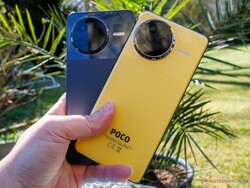







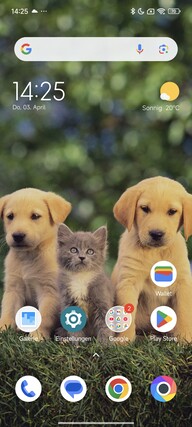
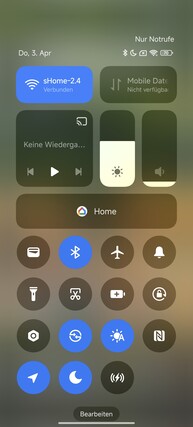

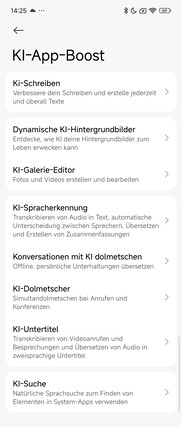
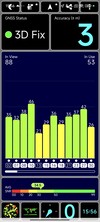
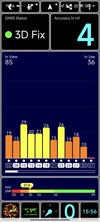


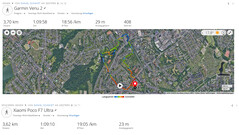



















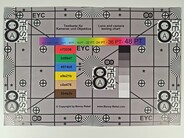

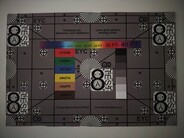

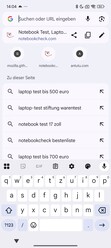


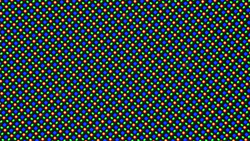
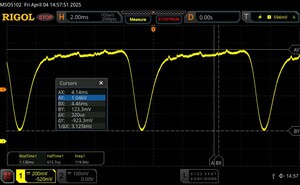








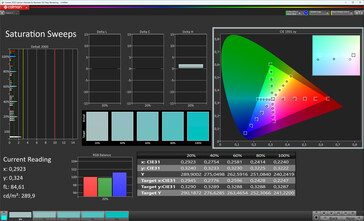
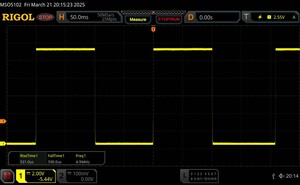
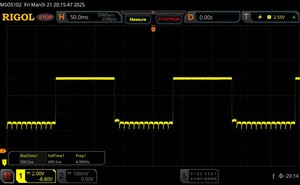

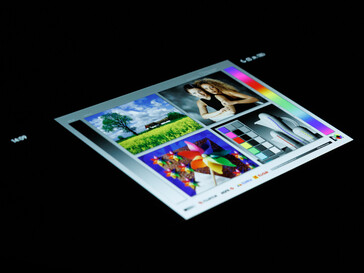
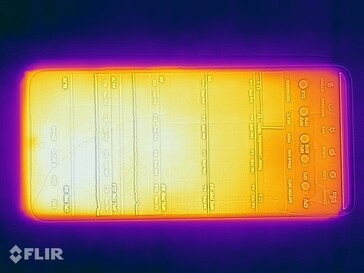
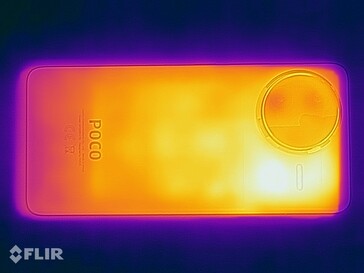
 Total Sustainability Score:
Total Sustainability Score: 










